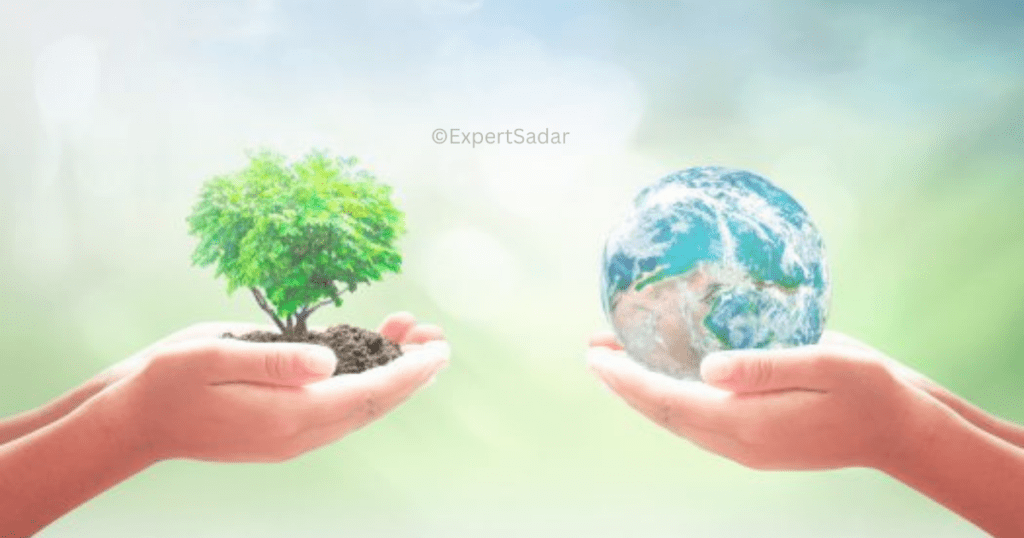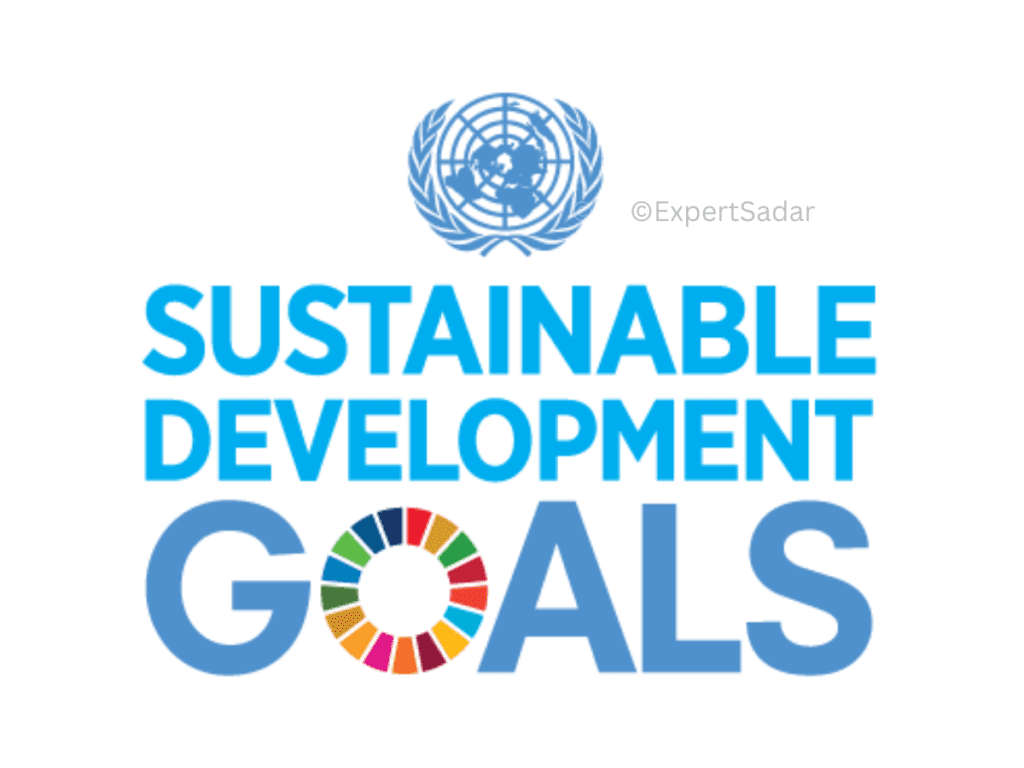The Sustainable development goals, also known as the Global Goals. Were adopted by the United Nations in 2015 and call on the world to end poverty. Protect the planet by 2030, and guarantee wealth and peace for all.
The 17 SDGs are mutually reinforcing – they recognize that actions in one area will affect outcomes. In other areas and that development balances social, economic, and environmental sustainability.
Countries have pledged to give priority to helping underdeveloped countries develop. The Sustainable development goals aim to end poverty, hunger, HIV, and discrimination against women and girls.
Achieving the SDGs in any context requires the creativity, expertise, technical and financial resources of the entire community.
1- Healthy children and families = increased prosperity
Immunization provides a platform for nutritional interventions and together with good nutrition can help reduce child mortality. Vaccine-preventable diseases can lead to malnutrition in children because they interfere with the absorption of essential nutrients. Malnourished children are more likely to die from infectious diseases. Such as diarrhoea, measles and pneumonia, many of which are vaccine-preventable.
2- Vaccine + food = healthy family
Vaccination and good nutrition go hand in hand. Vaccine-preventable diseases often leave malnourished children. Malnourished children are more likely to die from infectious diseases. Such as diarrhea, measles, and pneumonia, many of which are vaccine-preventable.
3- Vaccination = healthy and comfortable life
One of the most economical ways to prevent disease and save lives is through immunization. Each year, vaccines save 2-3 million lives and protect millions from disease and disability. It regularly reaches more households than any other health service and keeps its communities in regular contact with the health system. It provides an effective platform for the delivery of other basic health care services and creation of universal health coverage.
4- Immunization = better education
Immunization can improve academic performance because vaccinated children learn more and perform better in school. Which has a positive impact on long-term cognitive development and productivity. In addition, schools serve as platforms for health promotion, distribution of vaccines and other health services. The benefits go both ways; Children of educated parents are more likely to be vaccinated and raised better, and thus enjoy better health.
5- Vaccination = women and girls
Immunization is an intervention aimed at achieving gender equality. Worldwide, girls and boys receive the same dose of the vaccine. However, disparities exist at the tribal level and in some countries. With various barriers preventing women from accessing health services for their children. GAVI helps countries work together to identify and address gender-related barriers to immunization service. Such as training women’s health workers, because empowering women in childhood immunization Important to increase immunization coverage.
6- Clean water and canned food
Water scarcity affects more than 40 percent of the population and is expected to intensify as temperatures rise. Although sanitation has improved for 2.1 billion people since 1990, declining drinking water supplies are affecting every continent.
An increasing number of countries are facing water stress, and increasing drought and desertification have exacerbated these trends. By 2050, at least one in four people is expected to suffer from chronic water scarcity. To provide safe and affordable drinking water for all by 2030. We need to invest in adequate infrastructure, ensure sanitation and promote hygiene. Protection and restoration of water-related ecosystems is essential.
Providing safe, affordable drinking water to more than 800 million people worldwide who live without basic services. And improving access and protection for more than 2 billion people. In 2015, 4.5 billion people lacked safely managed sanitation (including adequate waste disposal or treatment). And 2.3 billion lacked even basic sanitation.
7- Clean and economical energy

Between 2000 and 2018, the number of people with electricity increased from 78 percent to 90 percent. While the number of people without electricity decreased to 789 million. But as the population grows, so does the demand for cheap energy and the oil-based economy is causing major changes in our climate.
Every year, if we want to achieve Sustainable development goals 7 by 2030, we need to invest in solar. Wind and thermal energy, increase energy productivity and provide energy for all. Infrastructure expansion and technology improvements to provide cleaner, more efficient energy to all countries will drive growth. And help. the environment
8- Good jobs and economic growth
Despite the continued impact of the 2008 economic crisis and global recession. The number of workers living in extreme poverty has declined significantly over the past 25 years. In developing countries, the middle class now accounts for more than 34 percent of employment.
However, as the global economy recovers, we find that growth is slowing, inequality is rising, and we are not doing enough to keep up with the growing labor force. According to the International Labor Organization, more than 204 million people were unemployed in 2015. The SDGs promote Sustainable development goals economic growth, high productivity and technological innovation. Entrepreneurship and job creation are key to effective action to end forced labour, slavery and human trafficking. With these goals in mind, the goal is full, productive employment and decent work for all women and men by 2030.
9- Industry, Innovation and Infrastructure
Investment in infrastructure and innovation is a key driver of economic growth and development. With more than half of the world’s population now living in cities, public transport, renewable energy development, new industries and information and communication technologies are becoming increasingly important.
Technological progress is key to finding Sustainable development goals to economic and environmental challenges, such as creating new jobs and improving energy efficiency. Promoting Sustainable development goals industries and investing in research and innovation are important means of facilitating Sustainable development goals. More than 4 billion people still do not have access to the Internet, 90 percent of them in developing countries. Bridging this digital divide is important to ensure equal access to information and knowledge and to promote innovation and entrepreneurship.
10- Improved health = increased equality
Immunization protects community health, reduces the number of people falling into poverty, and gives children equal opportunities to be healthier and more productive. Govi provides information on immunization and health services in primary health care, focusing on poor and marginalized populations, particularly the urban poor, communities living in remote rural areas and conflict zones, and unvaccinated children (“zero doses”).
11- Immunity = healthy city

By 2050, 70% of the world’s population will live in cities. More than a billion people live in slums or informal settlements, many of whom lack access to basic health services. Strengthening immunization programs in urban areas protects against epidemics and provides an opportunity to provide integrated prevention services to urban and disadvantaged populations.
12- Institute = knowledge about the effects of climate change
Climate change impacts include human health and well-being, livelihoods and security, particularly for the poorest and most vulnerable communities, such as people on the move. Immunization is essential to increase the resilience of people and systems and to reduce the risk of outbreaks of climate-sensitive diseases such as yellow fever, cholera and Ebola, especially in urban, vulnerable and post-disaster areas.
13- Strong health systems = long-term stability
Effective, safe, and people-centered health systems are the cornerstones of social institutions in all countries, and immunization is the first point of contact between these systems and people. GAVI, in collaboration with the Vaccine Alliance, helps countries improve equitable access to vaccines, build public confidence, increase social cohesion, and help build more peaceful and inclusive societies.
14- Innovative partnerships = amazing growth
The Vaccine Alliance’s innovative public-private partnership model leverages each partner’s comparative advantage to transform global development by accelerating equitable and Sustainable development goals vaccine access. Since 2000, GAVI has helped countries immunize more than 760 million children. It has reduced deaths from vaccine-preventable diseases in these countries by more than 60 percent and cut the under-five mortality rate in half.
15- Strengthening the implementation mechanism for Sustainable development goals and renewing international partnerships
The 2030 Agenda for Sustainable development goals is global and calls for action from developed and developing countries to ensure that no one is left behind. This requires partnerships between governments, the private sector and civil society. Achieving the Sustainable Development Goals is only possible with a strong commitment to international partnership and cooperation.
By 2021, the total external debt of low- and middle-income countries will reach $9 trillion, which is 5.6 percent more than in 2020. In 2022, global exports will grow by 12.3 percent, and global trade volume will reach $32 trillion. By 2022, net official development assistance to member countries of the Development Assistance Committee will reach $206 billion. To succeed, all must mobilize existing and additional resources, and developed countries must meet their ODA commitments.
16-Build peaceful and inclusive societies that promote Sustainable development goals, provide justice for all, and build effective, accountable and inclusive institutions at all levels.
People everywhere should be free from fear of any form of violence and live in safety regardless of race, religion or gender. Between 2021 and 2022, civilian casualties directly related to the world’s 12 deadliest conflicts are expected to increase by 53 percent, the first increase since the 2030 Agenda, which was adopted in 2015. War-related growth is expected to increase by more than 50 percent between this year and 2022. Civilians died.

17-Severe armed violence and insecurity harm the development of a country.
In situations of conflict or where the rule of law does not exist, sexual violence, crime, exploitation and violence are common, and countries must take measures to protect against risk. By the end of 2022, 108.4 million people will be forcibly displaced worldwide. 19 million by the end of 2021, two and a half times more than ten years ago. It is estimated that 458,000 murders will be committed in 2021 – the highest number in two decades.
Governments, civil society and communities must work together to find lasting solutions to conflicts and insecurity. It is important to strengthen the rule of law and promote human rights by reducing illegal arms trafficking, fighting corruption, and promoting inclusiveness at all times. Protecting, restoring and promoting the Sustainable development goals use of land ecosystems, sustainably maintaining forests, combating desertification, and preventing and preventing land degradation and biodiversity loss.
Earth’s ecosystems are critical to sustaining human life, account for half of the world’s gross domestic product, and embody diverse cultural, spiritual, and economic values. Global forest cover has declined from 31.9% (4.2 billion hectares) in 2000 to 31.2% (4.1 billion hectares) in 2020. Official Development Assistance (ODA) to support biodiversity increased by 26.2 percent from $7.7 billion to $208 billion by 2021. By 2022, 21 percent of snake species are threatened. Between 2015 and 2019, at least 100 million hectares of healthy and productive land will be lost each year, affecting the lives of 1.3 billion people. Our common heritage requires the restoration of land ecosystems and deforestation to reduce the loss of natural ecosystems and biodiversity.
Blog By:- ExpertSadar



